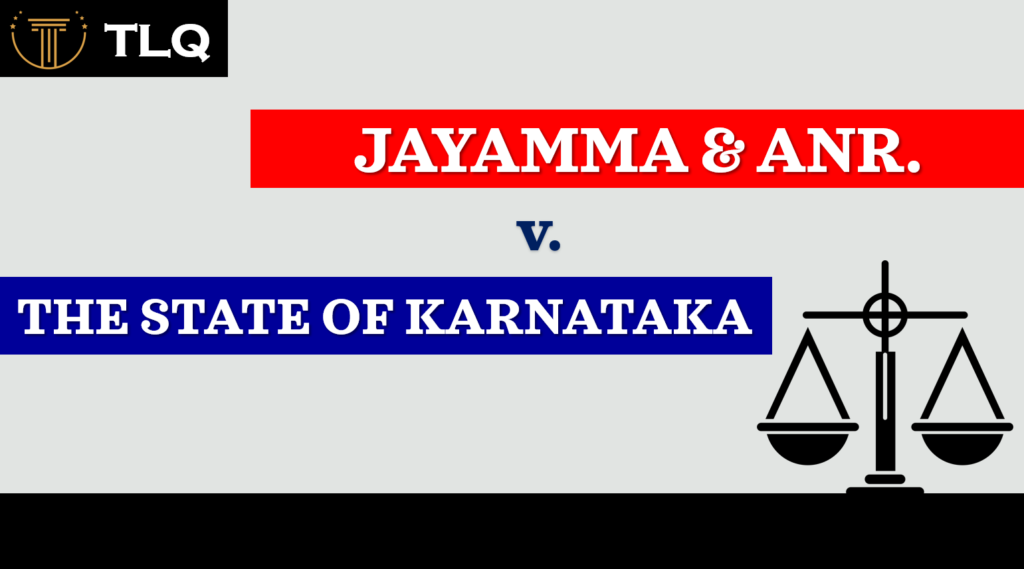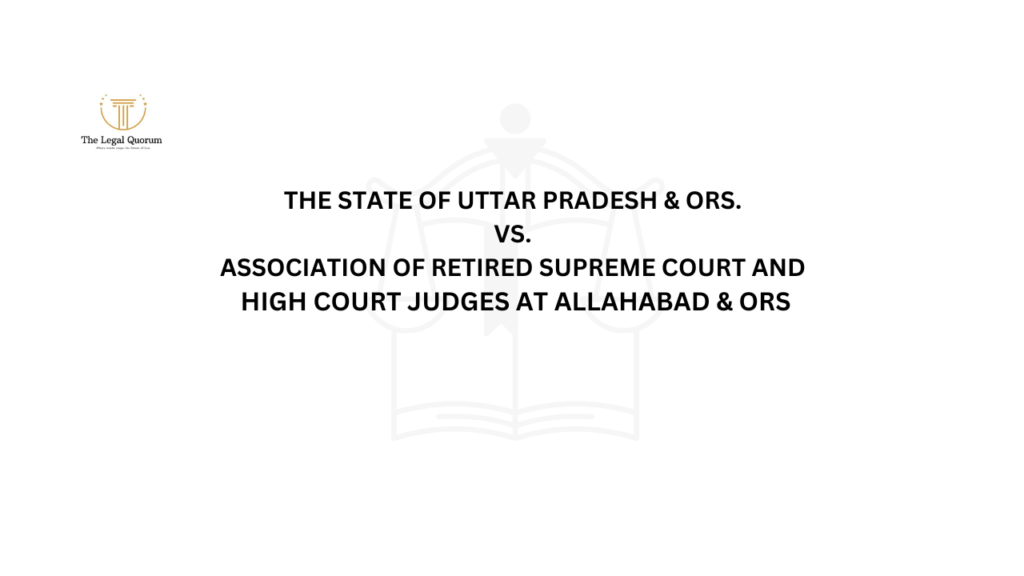Published On: 17th January, 2024
INTRODUCTION
At Honourable Supreme Court, a three-judge bench comprising Justice Dr. D.Y. Chandrachud, Justice J.B Pardiwala and Justice Manoj Mishra, upheld the constitutional validity of section 95- section 100 of Insolvency and Bankruptcy, 2016(Code) in the judgement dated on November 9, 2023.
While dealing with 384 petitions in Dilip B. Jiwarajka v. Union of India and Ors[1], SC clarified that the sections, which dealt with the Insolvency Resolution Process, do not violate the principles of natural justice. (Article 21)
BACKGROUND
The Insolvency and Bankruptcy Code, of 2016 establishes a unified framework that regulates insolvency and bankruptcy procedures for companies, partnership entities, and individuals. Part III of the code deals with insolvency resolution and bankruptcy for individuals and partnership firms. Particularly, Chapter III of Part III deals with the Insolvency Resolution Process. A debtor or creditor may begin the IRP in accordance with Sections 94 and 95 of the IBC by submitting an application. This results in the issuance of an interim moratorium[2] that requires the Adjudicating Authority(AA) to choose a Resolution Profession(RP)[3]. After reviewing the application, the RP is required to provide the Adjudicating Authority with a report that includes recommendations[4]. The Adjudicating Authority will then have the option of accepting or rejecting the application[5]. Since we are determining whether the aforementioned IBC provisions are constitutional, the specific facts of the case are not mentioned here.
PETITIONERS SUBMISSION
The aforementioned provisions were the primary contention of the writ petitions. The Petitioners argued that a judicial authority must determine whether a debt exists before filing for Insolvency under the IBC, appointing a resolution professional, or, at the least, before the resolution professional takes any action, and failure to do so would result in violation of the principles of natural justice. It has been argued that the Adjudicating Authority ought to ascertain at the threshold whether (a) a debt exists; and (b)whether the debt has been effaced. The Petitioners questioned the separate procedure adopted under the IBC for Individuals and corporations. They questioned the necessity of establishing a separate procedure for Individuals, given that the law surrounding the Corporate Insolvency Resolution Process(CIRP) was already well established and devoid of any constitutional flaws. Additionally, the resolution professional’s power to access information from the guarantor and from third parties is unfettered and can significantly affect the creditworthiness of the debtor. The Petitioner’s prayed for the removal of the automatic process that initiated an interim moratorium upon the filing of an application, the appointment of a Resolution Professional, the Resolution Professional reaching the debtor for information and submitting a report, until a court enquiry was conducted to confirm the existence of debt and a debtor-creditor relationship.
RESPONDENTS SUBMISSION
The Respondents centered their argument on the concept that the “heart and soul of the Code” is the timely settlement of insolvency. Thus, the respondents countered that adding an adjudicatory step to an IRP at the time of the RP’s appointment would undermine its time-bound character. Additionally, the Respondents contended that the moratorium imposed under Section 96 of the Code differs considerably from the moratorium imposed under Section 14 or Section 101. The Respondents further supported their argument by citing several Code provisions, such as those pertaining to public announcements[6] and corporate debtor management[7] as well as other implications associated with the imposition of a moratorium under Section 14. It was claimed that Section 96 had no such ramifications. On the other hand, the guarantors profit from the interim moratorium under Section 96, which is only enforced on the “debt” and not the “debtors”, as it shields them from further legal actions. Additionally, under Section 101(2) of the Code, the debtor has the opportunity of being heard before the Adjudicating Authority, while the report of the Resolution Profession is under consideration. It was argued that the Resolution Professional’s job during the interim phase was essentially facilitative. The Respondent made it clear that the Adjudicating Authority is not obligated to follow Resolution Professional’s recommendations, and as a result, Resolution Professional’s duty is not adjudicatory in nature. Furthermore, the Resolution Professional’s inspection is only “in connection with the application” and hence limits the scope of inquiry under Section 99(4).
ANALYSIS BY THE SC
The Supreme Court undertook an in-depth analysis and examined the issue in a two-fold manner. First, it compared and contrasted Part II and Part III of the IBC, highlighting differences in each stage, Resolution Professional’s function, the effects of the corresponding moratoriums, and the adjudicating authority’s engagement. Second, the SC assessed the IRP’s provisions in light of the principles of natural justice. While doing so, the SC made the following observations:
- Role of the Resolution Professional- The SC observed that under a CIRP, the appointment of the interim RP occurs following the acceptance of an application to oversee the corporate debtor’s business and carry out the board of director’s authority. In contrast, the RP in an IRP is appointed at the application filing stage. Examining the application and providing the AA with a non-binding report that makes recommendations are some of RP’s duties. The RP is permitted to seek additional data or explanations from the creditor, debtor, or third parties on grounds pertinent to the application and therefore satisfies the proportionality test established by the SC, ensuring there is no violation of the right to privacy (Article 21) of the debtor. Remarkably, in an IRP, the RP’s functions are far lesser than the CIRP. The RP merely takes on a facilitative role; and is not permitted to take over business or assets. The RP’s duties are mostly administrative and non-adjudicatory, with an emphasis on obtaining data and confirming creditor’s claims. As a result, no court decision is made until the AA steps in after the report has been submitted.
- Impact of Interim- moratorium- A CIRP moratorium is enforced by an AA’s order. Upon acceptance of the application, it stops the filing of new lawsuits against the corporate debtor as well as the continuation of existing lawsuits or proceedings. It forbids the corporate debtor from transferring, encumbering, alienating, or disposing of any of its assets, together with any related legal rights or benefit interest. On the other hand, the filing of an application under an IRP establishes an interim moratorium. Legal activities pertaining to the debt are temporarily suspended by the interim moratorium. Crucially, the debt is the subject of the IRP moratorium, not the debtor. Thus, the protective goal of the moratorium under IRP is to prevent the corporate debtor from starting or continuing legal procedures pertaining to the debt.
- Role of Adjudicating Authority- The prerequisite for filing a case under Section 94 or Section 95 of the IBC is substantially lower than it is under CIRP. Based on this intelligible differentia, the legislature decided to place the RP’s power before the actual adjudication by the AA under Section 100 of the IBC in order to relieve the burden of the AA by assigning the RP with a basic fact-finding process.
- Principles of Natural Justice- There is no violation of natural justice in an IRP because the debtor has a chance to engage in the RP’s application assessment process. The debtor’s facts and explanations are taken into account while creating the RP’s recommendatory report. The adjudicating body must also conduct an impartial evaluation and guarantee that the debtor is given a reasonable chance to contest the debt, including those which the creditor has registered with an information service.
- Constitutional Validity- The SC noted that the Insolvency and Bankruptcy Board of India (Insolvency Professionals) Regulations, 2016 ensures confidentiality in accordance with the privacy standards established in the K.S. Puttaswamy v. Union of India[8], which refers to Article 21 of the Indian Constitution. The SC justified the gathering of private financial data, citing the legitimate goal of creating an all-encompassing framework for individual insolvency. SC mentioned the intelligible differentia between a CIRP and an IRP and underlined that the IBC cannot operate retroactively.
CONCLUSION
As a result, the SC concluded that no judicial adjudication is involved under Section 95 to Section 99. The RP appointed under Section 97 has a facilitative role of gathering all pertinent facts in order to examine the application for the commencement of the Insolvency Resolution Process.
The argument that, in accordance with Section 97(5) of the IBC, the adjudicatory body ought to hold a hearing in order to ascertain “jurisdictional facts” at the time is assigned Resolution Professional is rejected.
There isn’t any natural justice violation, in accordance with Sections 95 to 100 of the IBC, since the debtor is given the chance to engage in the resolution professional’s review of the application.
As a result, the SC dismissed the petitions, ruling that the IBC’s disputed sections adhere to natural justice principles and are devoid of any blatant arbitrariness.
Reference(s):
[1] Writ Petition (Civil) No. 1281 of 2021
[2] Section 96 of IBC
[3] Section 97 of IBC
[4] Section 99 of IBC
[5] Section 100 of IBC
[6] Section13(2) of IBC
[7] Section 17 of IBC
[8] (AIR 2017 SC 4161)




